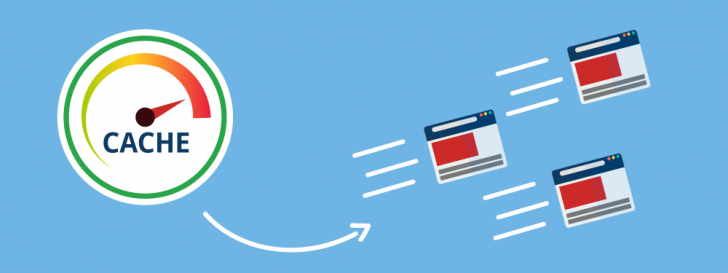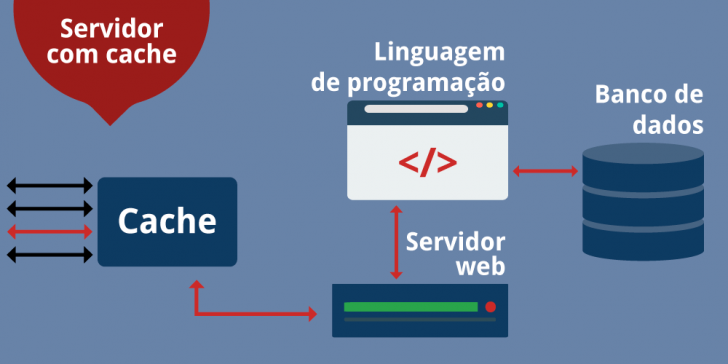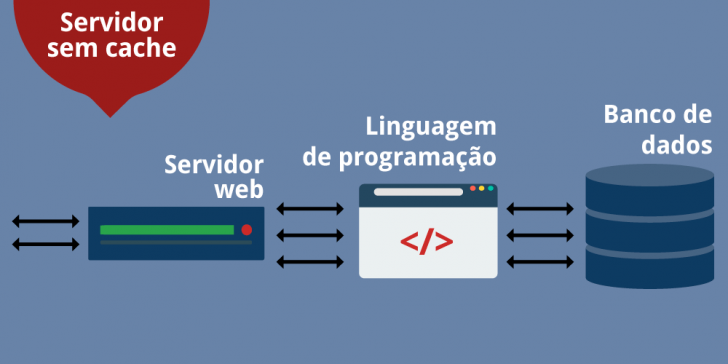

New terms are frequently coined in the ever-evolving technological landscape to describe novel resources and technologies. It is common to encounter unfamiliar technology names without understanding their significance. This article explores the concept of cache, elucidates its meaning, and examines its role in website hosting.
Cache is a powerful feature that can enhance your website’s speed and reduce resource consumption on your hosting. Follow us to learn more about this topic.
What is cache?
Cache, in computing, can function as both hardware and software, storing data temporarily for quick access without requiring database processing or searching. It is commonly utilized in electronic devices such as smartphones and personal computers.
The cache on on-site hosting acts as a middleman between the user and the hosting server. It checks if a copy of the requested page is available for the user before sending the request to the server. If a copy is found, it is delivered to the user more quickly than if the request had to be processed by the server.


Example of a hosting WITH CACHE: Only a small number of requests are directed to the hosting server.
In a server without a cache, the process is distinct, as shown in the diagram. Here, all requests are handled on the server along with other system components.


An instance of SEM CACHE hosting involves all requests going through the hosting server.
The help desk
The cache system can be likened to a service counter in operation. Imagine a service room with employees serving customers at a counter, overseen by a manager who handles more complex issues referred by the staff. Most customer requests are resolved directly by the counter staff, but some require the manager’s input.


The cache in this imaginary situation is similar to the service desk as it handles most requests and only sends a few to the server.
Now that we have grasped the idea and how it works, we will be aware of the benefits of its implementation on a website.
Benefits of utilizing cache on a hosting server
Using this system on a hosting server can result in significantly faster loading times for a webpage, sometimes up to 1000 times faster than usual.
Another benefit is the decrease in server resource utilization, as not all requests are directed to the server, resulting in reduced consumption of resources like memory and processing power.
Cache cleaning or refresh
By periodically updating or cleaning the cache, it is important to ensure that visitors do not encounter outdated versions of web content.
Systems typically handle the task of refreshing or updating copies automatically. This means that content copies are regularly updated whenever changes are made to the page, or at scheduled intervals. This automated process ensures that stored content is consistently up to date, saving time and simplifying website management. Oftentimes, caching is implemented by the hosting provider without the user needing to be aware of or manage the cleaning or updating process.
Cleaning can also be carried out by hand, with the specific method depending on the system in use.
Types of cache utilized in web hosting
Let’s now become familiar with some typical methods of utilizing cache in the context of the internet and websites.
Web browser
Internet browsers like Chrome, Firefox, and Edge save website copies in their cache systems to speed up page loading by accessing cached pages first before checking for updates on the server.
The browser storage system can store various elements of a webpage, such as images, style files, and scripts. Cached items like images and scripts that are used across multiple pages of a website do not need to be reloaded each time, as a copy is already stored.
Server hosting
In website hosting, a cache system is employed to deliver requested content to the user before the server processes any data. If a copy of the content exists, it is sent directly to the user; otherwise, the request is forwarded to the server.
This system is compatible with all programming languages and databases. Several web servers like NGINX and Apache come with built-in cache to speed up content delivery and lessen server workload.
Many hosting providers now provide these solutions on their servers, where the cache can be set up or installed by default on the client server. Companies prefer customers to utilize this resource as it helps reduce server processing load. If unsure about the presence of a cache system in your hosting, reach out to customer support for assistance. They will have the necessary information and can help set up the service if needed.
Discover more: 5 characteristics of effective assistance (and a drawback to avoid).
Varnish cache helps improve website speed.
Varnish is a free and open source acceleration system designed for cache-based websites. It functions as an HTTP reverse proxy and can be installed on any server supporting the HTTP protocol.
Many website hosting companies provide Varnish as a service, which can be easily activated through the hosting control panel or by requesting installation. Some companies even have Varnish pre-configured on their servers, eliminating the need for users to do any additional setup.
The term “fun” in English, interestingly, refers to “varnish,” selected as a nod to the substance used on physical items to enhance their shine and appearance.
CMS plugins


W3 Total Cache is a plugin for WordPress.
Content management systems, commonly referred to as CMS, are essential for website management and content publication. They provide user-friendly interfaces for managing content without requiring technical expertise. Various CMS options are available, including popular ones like WordPress, Joomla for blogs and websites, and Magento for online stores.
Most content management systems support the use of plugins, which are software components that enhance a CMS with additional features and capabilities. It is highly recommended to have a cache plugin installed in your CMS to ensure fast loading speeds and optimize your website. This plugin creates and stores full page copies for quick access, helping to minimize loading times for websites, online stores, and other web applications.
Some of the most commonly used plugins include W3 Total Cache for WordPress and JotCache for Joomla.
Content Delivery Network
A content distribution network, known as CDN, spreads content copies across various servers globally. This ensures that visitors receive cached content from the closest data center when accessing a site page, rather than directly from the site’s original server.
CDN can accelerate a website’s loading speed by caching its content and connecting to a server that is geographically closer to the user.
Conclusion
When a website’s speed is vital for your business, every tiny bit of time saved in loading a page works in your favor. Having an effective cache system is essential to support this goal.
We learned about cache and its uses in web hosting, including popular types of use and potential applications in this article.
If you have any inquiries regarding the topic or wish to contribute additional information to the article, feel free to leave a comment, and we will be happy to discuss.
Source: Varnish


Publication date: June 23, 2017 (revised on April 20, 2018)
Concepts are labeled as Tags.
